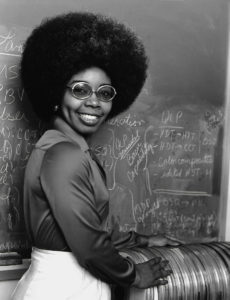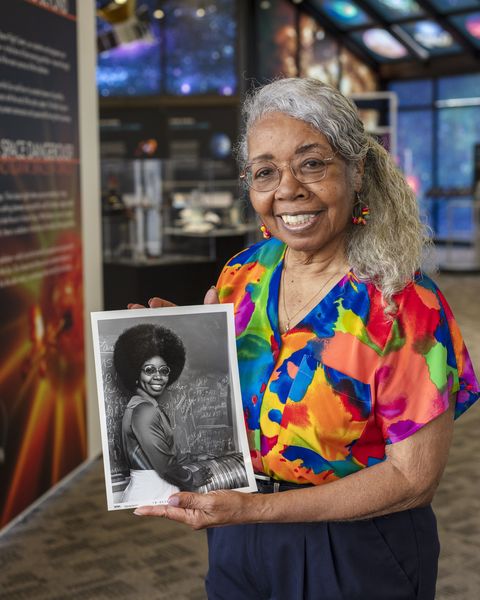Did you ever wear 3D glasses in movie theaters? Perhaps most of us do. With 3D images, they truly boost the viewing experience. Technology continues to evolve, and with the introduction of 3D glasses, much has changed. We need to retrace to figure out where all of this started if this is the case. History has all the answers here. We may not often come across a “Black Inventor” in the field of history. Let’s say our schools’ curriculum does not focus too much on them. There they are. I’m going to focus on one incredible woman in this piece. Valarie Thomas is her name. It was in the 43rd year of the 20th century that she was born.
After seeing her father tinkering with the television and seeing the mechanical parts inside the TV, Thomas was interested in science as a child. She read The Boys First Book on Electronics at age eight, which ignited her interest in a science career. Despite his interest in technology, her father would not assist her with the projects in the novel. She is a “Black Inventor,” so this means she pressed on to what she believed in. That is herself. She was not allowed to undertake science and math courses at the all-girls school she attended, but she did manage to take a physics course. Thomas would attend the University of Morgan State, where she was one of two women with a major in physics. In her math and science classes at Morgan State University, Thomas excelled.
The lack of parents’ and teachers’ encouragement did not stop her from excelling. It was not even the color of her eyes. She then joined the National Aeronautics and Space Administration (NASA) as a data analyst. She was able to work well with NASA and establish a good reputation after a while.
For the Wide Area Crop Inventory Experiment (LACIE), a collaborative venture with NASA’s Johnson Space Center, the National Oceanic and Atmospheric Administration (NOAA), and the U.S., Valerie led a team of around 50 people in 1974, Agricultural Department.
She was fascinated by what she had learned at this seminar that she decided to build it independently. She will begin playing with flat and concave mirrors later that year. They used mirrors at the exhibition that tricked the audience into thinking that a light bulb would glow even when not attached to the socket. The flat mirrors will have a reflection that would appear to be behind the glass on a particular object. The concave mirror, creating a three-dimensional illusion, would have a review that would be in front of the glass. Her goal was to make the image reflected by the concave mirrors appear in the illusion’s 3D. Through this exhibit is how she was able to invent transmitters of illusion.
She decided to display the video data in a more exciting and precise way. This fantasy will dramatically improve the commercial television industry. How this works, you must be thinking. With a concave mirror placed near the subject image and another second concave mirror placed at a distant distance, it is more similar to holographic development or parabolic mirrors that can give optical illusions. On 28 December 1978, she applied for a patent for this invention but was granted on 21 October 1980. Thomas’s patent explains this process in the following way: “Optical illusion may be produced by parabolic mirror wherein such images produced thereby are possessed with three dimensional attributes. The optical effect may be explained by the fact that the human eyes see an object from two viewpoints separated laterally by about six centimeters. The two views show slightly different spatial relationships between near and near distant objects and the visual process fuses these stereoscopic views to a single three dimensional impression. The same parallax view of an object may be experience upon reflection of an object seen from a concave mirror.”
Until 1995, she worked with NASA, after which she retired. She has other great inventions, but for another time, this is a story. I wanted you to know who the big lady behind the 3D series is. Some high-profile accolades and distinctions, such as the NASA Equal Opportunity Medal and the GSFC Merit Award, were also given to her. Valerie Thomas has shown that no person is restricted and has used her magic to alter.


